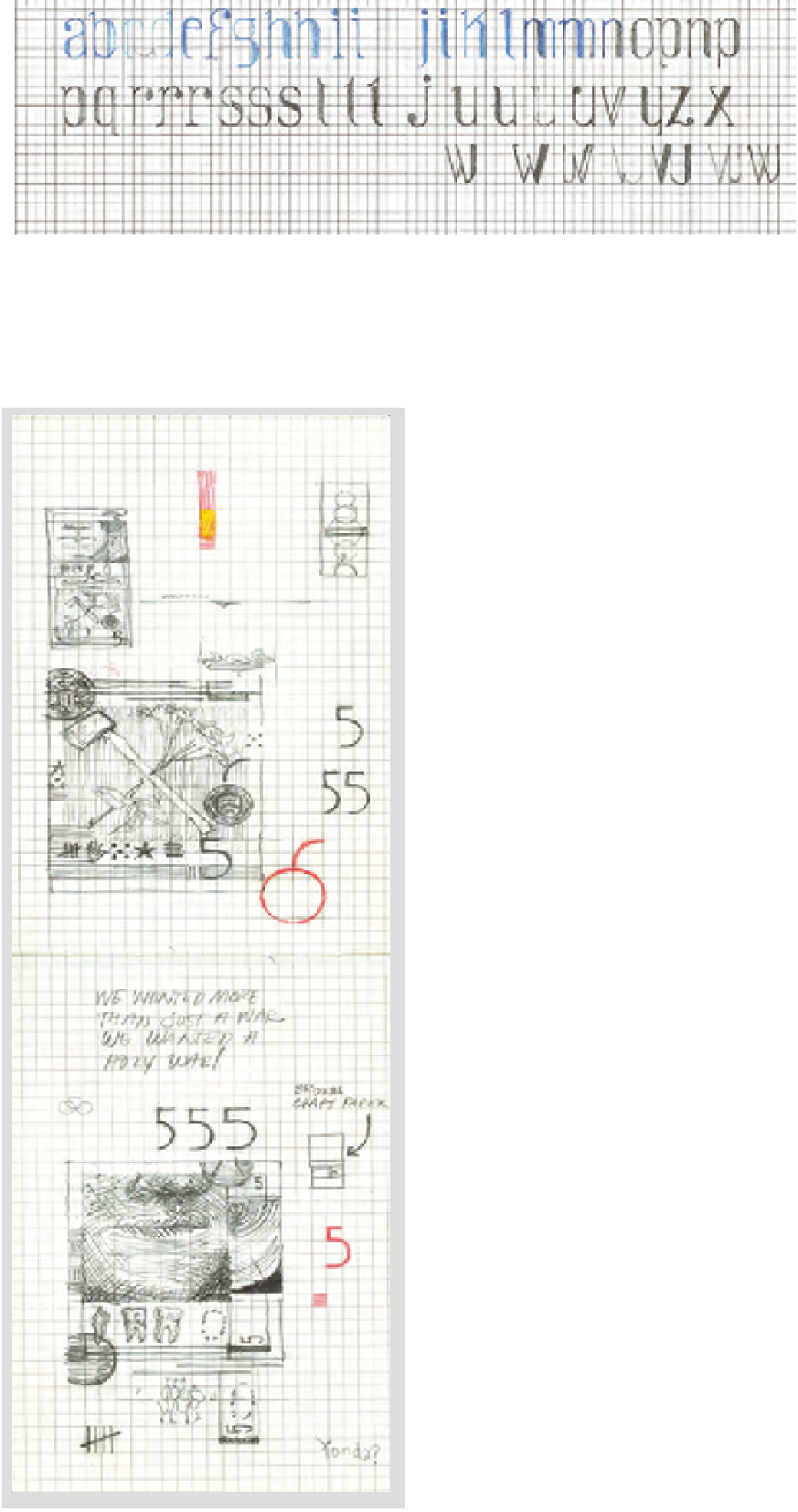Graphics Reference
In-Depth Information
12-50
12-50 and 12-51
Drawing allowed
both more nimble
experimentation
and more deliberate
development.
12-51
Expanding the system
Drew's initial Ludd typeface experiments with the design of numerals
grew into planning and creating an entire type family. Starting with the
mono weighted Ludd 1.1 and working to the heavier Ludd 1.7 (with
their corresponding obliques), Drew followed a natural progression
from an extremely light style to a heavy style. As he proceeded to
explore, he forged an unusual path, adding weight asymmetrically to
the existing frames and creating unusual and seemingly incomplete
versions (Ludd 2.3 through 2.6). These versions gave way to
developing a semi-san serif version (Ludd 3.3 through 3.6) with
contrasting weights (thicks and thins) similar to a serif face but with
tapered ascenders and descenders, stems, finials, and strokes, and the
inclusion of ball terminals. Finally, he designed a serif version with
three different weights (Ludd 4.3 through 4.8) (Fig.
12-49
).
Learning through making
Throughout Drew's investigation, one of his major concerns was to
reconnect with making, drawing, and visualizing ideas. The sketching
phase was critical because this manual design process allowed him
thoughtful review and evaluation during each step of the evolution. A
slower pace created a sphere in which missteps, chance combinations,
and unsatisfactory strategies could inform new directions of
exploration. Drawing was a way to fuse the physical making with the
thinking, to build trust in the creative process, and to push beyond the
sense of isolation and uncertainty that he sometimes felt as the project
unfolded (Figs.
12-50
and
12-51
).


